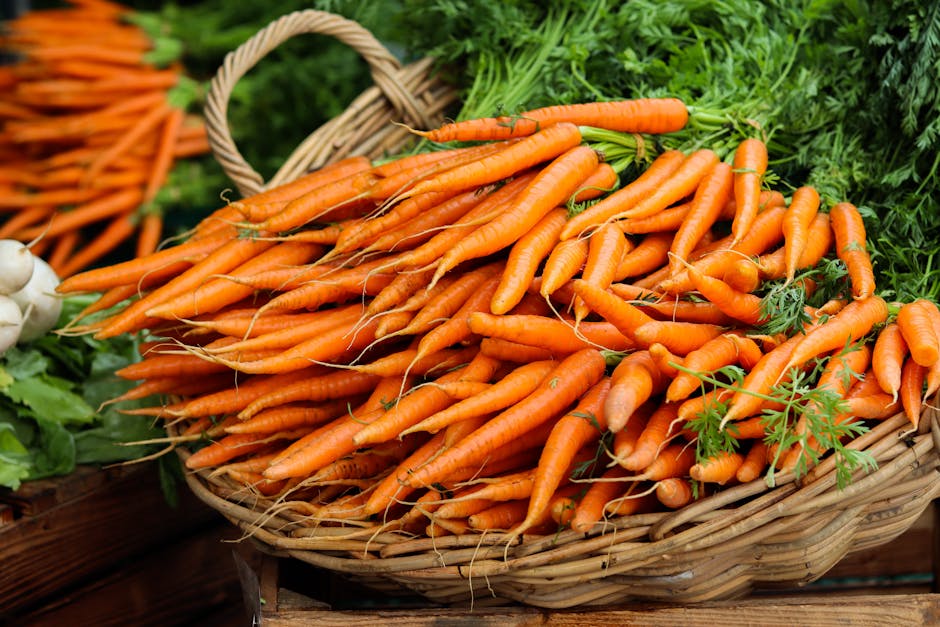Seasonal Eating: Benefits and How to Get Started
Why Seasonal Eating Matters
Imagine biting into a sun-ripened tomato at the peak of summer. It’s vibrant, juicy, and bursting with flavor, nothing like the bland, watery version you might find in winter. That’s the beauty of seasonal eating. It’s about enjoying fruits and vegetables when they’re naturally at their best, both in taste and nutrition. But it goes beyond just flavor. Seasonal eating supports local farmers, reduces the environmental impact of food transportation, and often saves you money.
Think of it this way: when produce is grown out of season, it often requires artificial environments, extra energy, and longer travel distances to reach your grocery store. A strawberry grown locally in June is far less resource-intensive (and a lot more delicious) than one shipped thousands of miles in January. Plus, eating seasonally can reconnect you with nature’s rhythms, reminding you that food isn’t just a product; it’s part of an ecosystem.
The Health Perks of Seasonal Produce
Ever notice how oranges and grapefruits are abundant in winter? That’s no accident. Citrus fruits are packed with vitamin C, which supports your immune system during cold and flu season. Similarly, summer berries are rich in antioxidants that help protect your skin from sun damage. Nature has a clever way of providing what our bodies need at the right time.
Research supports the idea that seasonal produce can be more nutrient-dense. According to a study published in the "International Journal of Food Science and Nutrition," certain crops lose nutritional value when stored for long periods or transported over great distances (ScienceDirect). A freshly picked carrot from a local farm will likely have more vitamins than one that’s been sitting on a truck for two weeks.
Beyond vitamins and minerals, eating seasonally also encourages variety in your diet. When you switch up your fruits and vegetables based on what’s available, you naturally consume a broader range of nutrients. Instead of defaulting to the same old lettuce-tomato-cucumber salad year-round, you might find yourself experimenting with roasted squash in autumn or sautéed asparagus in spring.
How to Start Seasonal Eating
If this all sounds great but a little unfamiliar, don’t worry, seasonal eating isn’t complicated. It starts with paying attention to what’s growing near you. A quick visit to your local farmers' market can give you a good sense of what’s in season. Farmers are often happy to share tips on how to prepare their produce, too.
Another easy trick is to look for sales at your grocery store. When something is in season locally, stores tend to have an abundance of it and lower prices to match. For instance, during peak apple season in fall, you’ll likely find better deals than you would in spring when apples have been in cold storage for months.

If you’re unsure about what’s seasonal where you live, many online resources can help. Websites like Seasonal Food Guide offer searchable databases based on location and time of year.
Making Seasonal Eating Practical
Switching to seasonal eating doesn’t mean overhauling your entire diet overnight. Start small by incorporating one or two seasonal items into your weekly meals. For example:
- In spring, try adding fresh peas or strawberries to your dishes.
- In summer, take advantage of zucchini and tomatoes for simple pasta dishes or grilled skewers.
- In autumn, experiment with roasted root vegetables like sweet potatoes and parsnips.
- In winter, focus on hearty greens like kale and Swiss chard or citrus fruits like oranges and grapefruits.
You can also plan meals around what’s abundant at the moment rather than sticking rigidly to recipes. For instance, if a recipe calls for spinach but kale looks fresher (and cheaper), go for the kale! Seasonal eating is as much about flexibility as it is about mindfulness.
The Bigger Picture: Benefits Beyond Your Plate
Eating seasonally isn’t just good for you, it’s good for the planet. Locally grown food typically has a smaller carbon footprint because it doesn’t require long-distance transportation or excessive packaging. Supporting local farmers also strengthens regional economies and preserves farmland from being developed into non-agricultural uses.
There’s also something deeply satisfying about feeling connected to your community through food. When you buy strawberries from a farmer down the road or visit an orchard to pick apples yourself, your meals take on new meaning. You’re not just feeding yourself; you’re participating in a system that values sustainability and quality over convenience.
If you’ve ever felt disconnected from where your food comes from (a common issue with modern supermarkets) seasonal eating can be a refreshing change. It brings you closer to the source while encouraging healthier choices along the way.
A Few Final Tips
If cooking with unfamiliar ingredients feels intimidating at first, start by keeping things simple. A drizzle of olive oil and a sprinkle of salt can do wonders for most vegetables, no fancy techniques required. Seasonal eating doesn’t mean spending hours in the kitchen; it’s about letting the natural flavors shine through.
You might also consider preserving some seasonal produce for later use. Freezing berries or making jars of tomato sauce during peak season allows you to enjoy those vibrant flavors even after they’re gone from the market.
And remember: seasonal eating isn’t about being perfect; it’s about being intentional. Even small steps (like swapping out-of-season imports for locally grown options) can make a meaningful difference for your health, wallet, and community.
The next time you're planning meals or grocery shopping, ask yourself: What tastes best right now? Let the seasons guide you, you might be surprised at how much more enjoyable (and rewarding) eating can be.